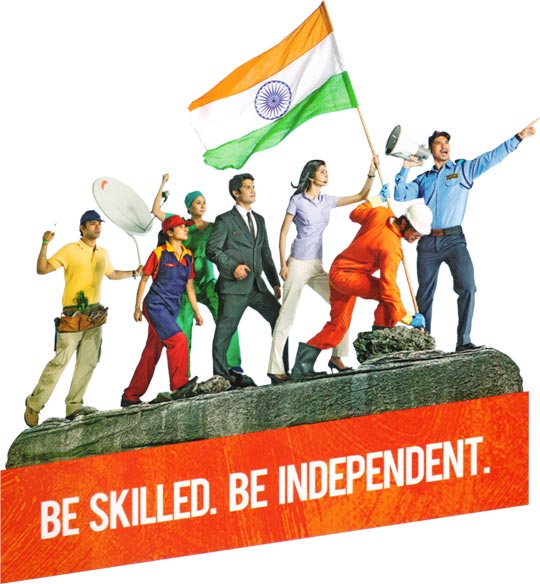Indian job market is flooded with qualified individuals but when it comes to surviving in a professional atmosphere, these individuals take good amount of time before delivering what is expected of them. Graduates with noteworthy diplomas too, sometimes, fail to demonstrate skills that employers seek.
India’s ex-President Mr. Pranab Mukherjee said in an event organize last year by CII in Kolkata, “We often boast about India’s demographic dividend. But the question that arises is what we do with this if we cannot skill them, if we cannot educate them and cannot enhance their employability.” (Quoted in IndiaToday, August 24, 2016 online edition).

It is also true that a huge chunk of Indian youth is unskilled. Higher education and skill development should go hand-in-hand so the employability of an individual can be enhanced. Apart from core subject related skills, individuals also require some basic skills like, team building, organizational skills, communication skills, adaptability, stress management, etc. The aforementioned skills are useful in all professional domains. But one needs to understand that not all skills are acquired at school. If along with theoretical knowledge children are provided with practical lessons, it’s sure to keep them more interested. Not only it could keep them more interested but it will also open up different employment options for them.
In order to produce skilled graduates, the government needs to start encouraging skill development at school level. At school, children learn much more than just what is prescribed in the curriculum. If one tries to inculcate necessary skills right from the tender age, a lot would change by the time an individual graduates. Sectors like agriculture, construction, logistics, retail, transport, etc. require skilled labors, but there aren’t enough in the country.
Skills development in India is not considered something that needs to be taken seriously the way it is in China. In China, children receive vocational training right at secondary school level. India too needs to take the transition and start building student workers. The pedagogy needs to be changed in order to incorporate skill development at school level. The curriculum itself needs to be rearranged in a way that skill development becomes merges effortlessly with it. E-learning, field visits, focus on practical knowledge, etc. are some of the steps that could steer things towards the required goals.
The good news is that India is already working in this direction. Organizations like Karmaarth Foundation and many others are working towards a skilled India. The National Vocational Education Qualification Framework (NVEQF) seeks to set common principles for a nationally recognized qualification system that covers school as well as vocational education. The initiative that is still underway would also encourage the creative genius of every child including those with special needs.
Once there is due focus on skill development, even rural areas—where the level of higher education is poor as compared to the cities—would benefit. It is also predicted that this will help control the school dropout rate because with the introduction of vocational education, migration from school curriculum to skill development would be easier.
India has a huge population, and it is true that despite having this huge population, there is lack of skilled labor. If skill development is incorporated in school curriculum this major issue could be dealt with. This would indeed take time but since things have already started shaping up, results would soon be visible.


























